A magentic field directed into the page changes with time according to B=(0.0300t2+1.4.40)T, where t is in seconds. The field has a circular cross section of radius R=2.50cm. What are the magitude and direction of the electric field at point P1 when t=3.00s and r1=0.0200m?
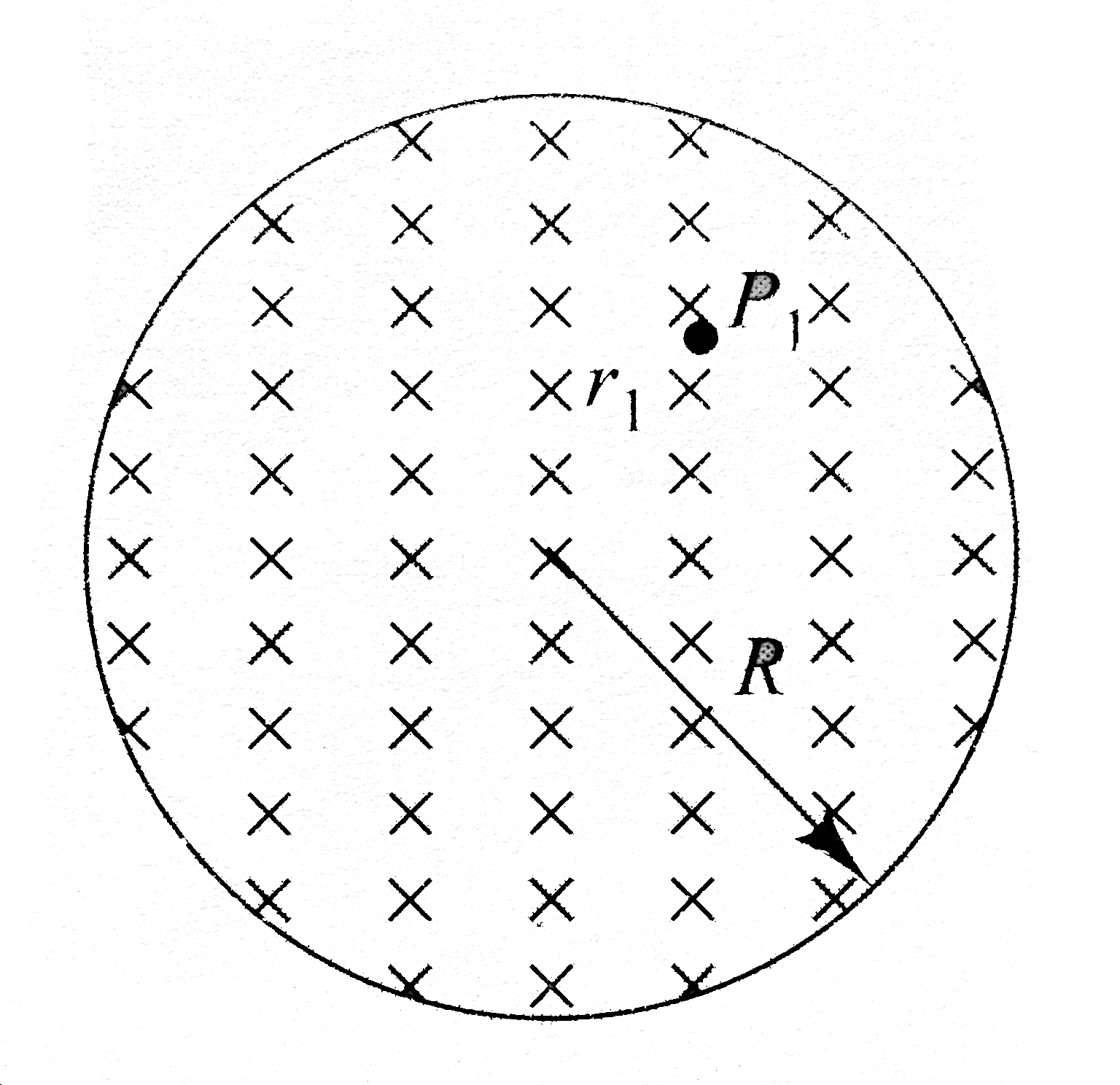
dBdt=0.060t
EatP1=r2dBdt=0.0202×0.060=6×10−4V/m
Here magentic field is increasing with time hence electric field will be in anticlockwise direction.
Topper's Solved these Questions
- INDUCTANCEBOOK - CENGAGE PHYSICSCHAPTER - INDUCTANCEEXERCISE - Exercises (subjective)
7 Videos
- INDUCTANCEBOOK - CENGAGE PHYSICSCHAPTER - INDUCTANCEEXERCISE - Exercises (single Correct )
65 Videos
- INDUCTANCEBOOK - CENGAGE PHYSICSCHAPTER - INDUCTANCEEXERCISE - Solved Examples
3 Videos
- HEATING EFFECT OF CURRENTBOOK - CENGAGE PHYSICSCHAPTER - HEATING EFFECT OF CURRENTEXERCISE - Thermal Power in Resistance Connected in Circuit
28 Videos
- KINETIC THEORYBOOK - CENGAGE PHYSICSCHAPTER - KINETIC THEORYEXERCISE - Question Bank
31 Videos
Similar Questions
For the situation described in figure, the magnetic field changes with time according to
B=(2.00t3−4.00t2+0.8)t and r2=2R=5.0cm
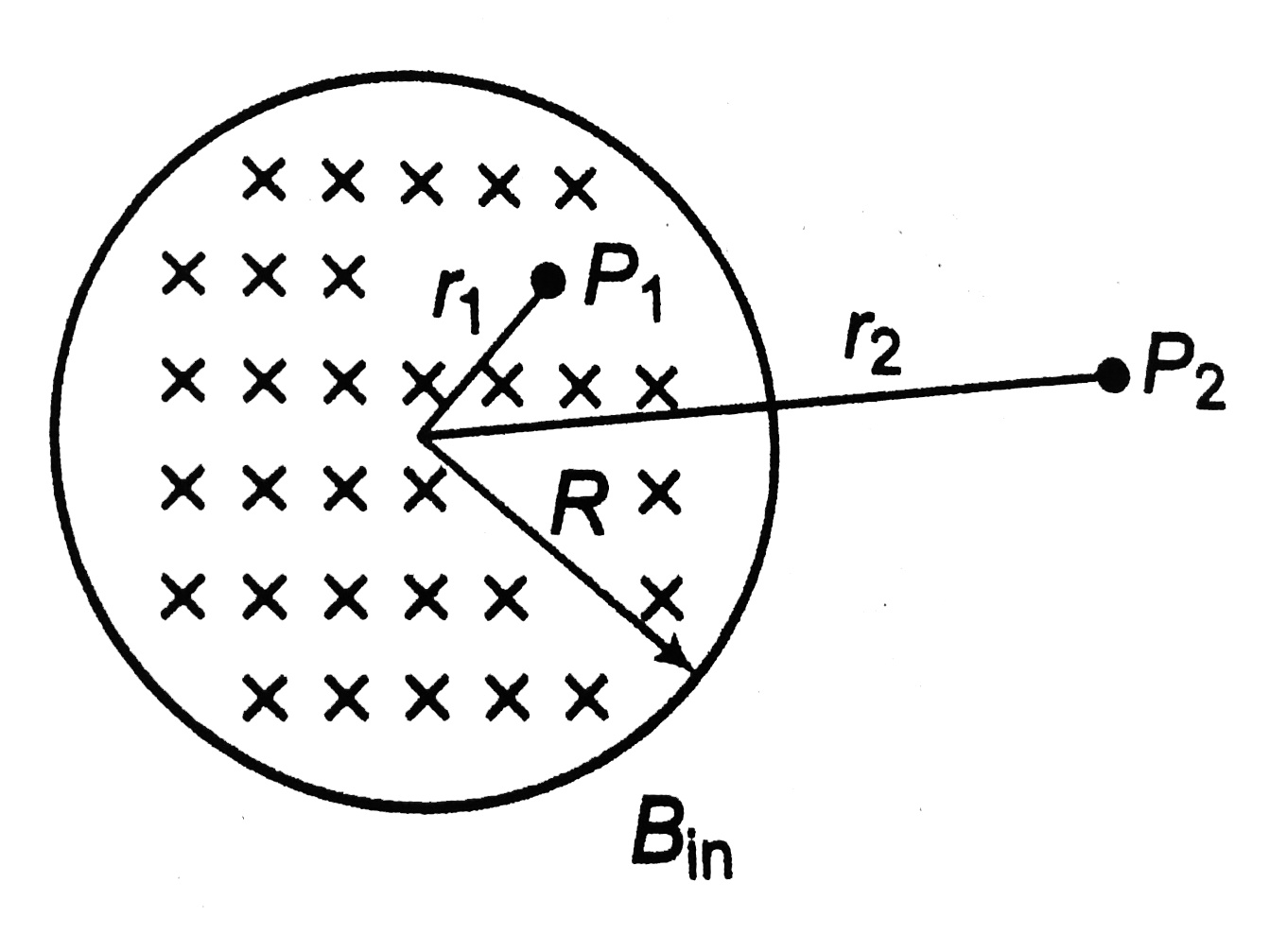
(a) Calculate the force on an electron located at P2 at t=2.00s
(b) What are the magnitude and direction of the electric field at P1 when t=3.00s and r1=0.02m.
View SolutionAs seen in Fig. 30-47, a square loop of wire has sides of length 3.0 cm. A magnetic field is directed out of the page, its magnitude is given by B=5.0t2y , where B is in teslas, t is in seconds, and y is in meters. At t = 2.5 s, what are the (a) magnitude and (b) direction of the emf induced in the loop?
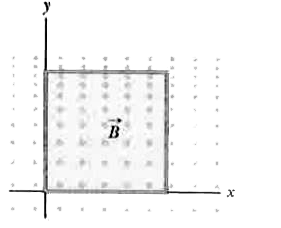
View Solution
Knowledge Check
A uniform but time varying magnetic field B=(2t3+24t)T is present in a cylindrical region of radius R=2.5cm as shown in figure.
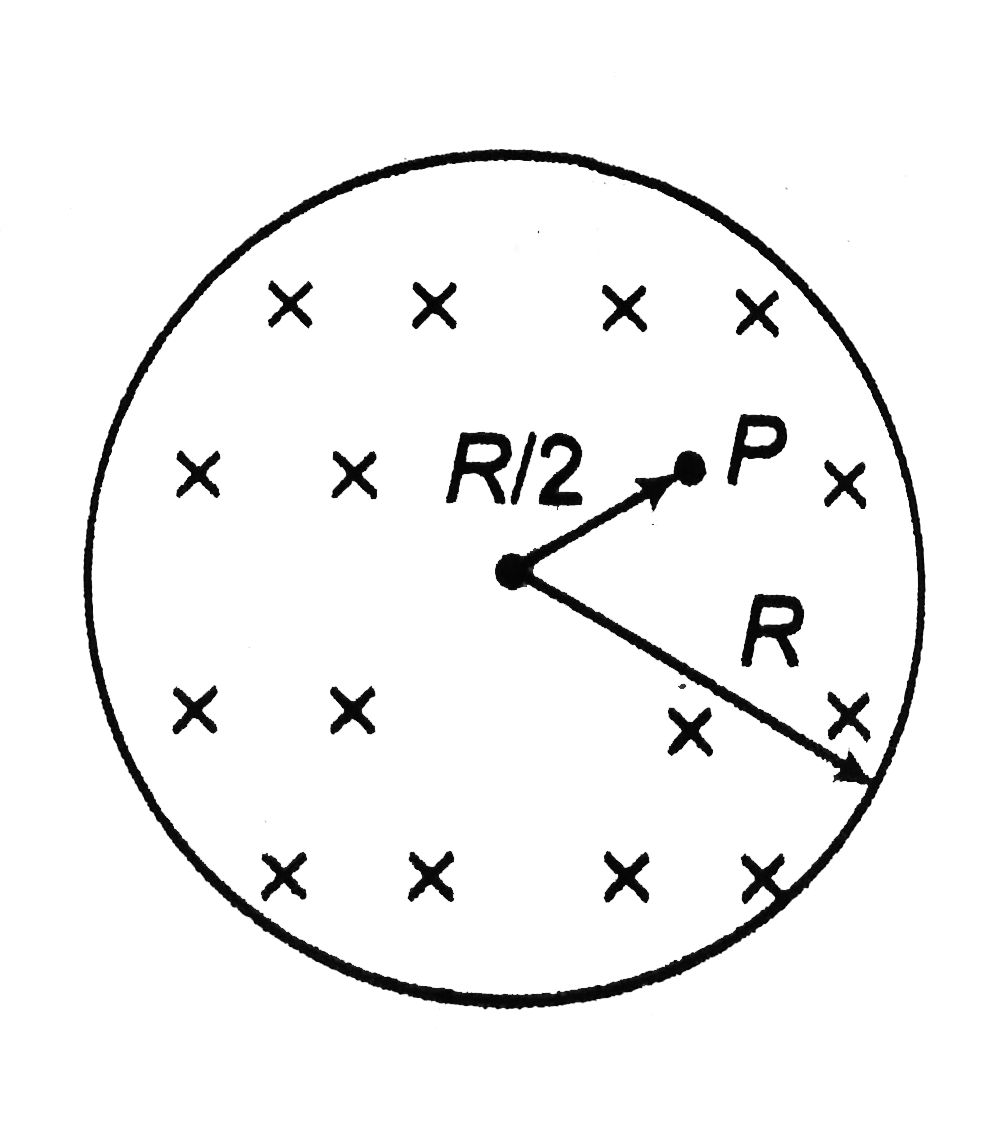
In the previous problem, the direction of circular electric lines at t=1s isAclockwiseBanti clociwiseCno current is inducedDcannot be predictedPower delivered to a paticle varies with time as P=(3t2−2t) watt, where 't' is in seconds, then change in its kinetic energy between time t=1 to t=3s.
A18JB24JC21JD32.5JThe magnetic field in a certain cylindrical region is changing with time according to the law B=[16−4t2] Tesla . The magnitude of induced electric field at point P at time t= time =2 sec , is
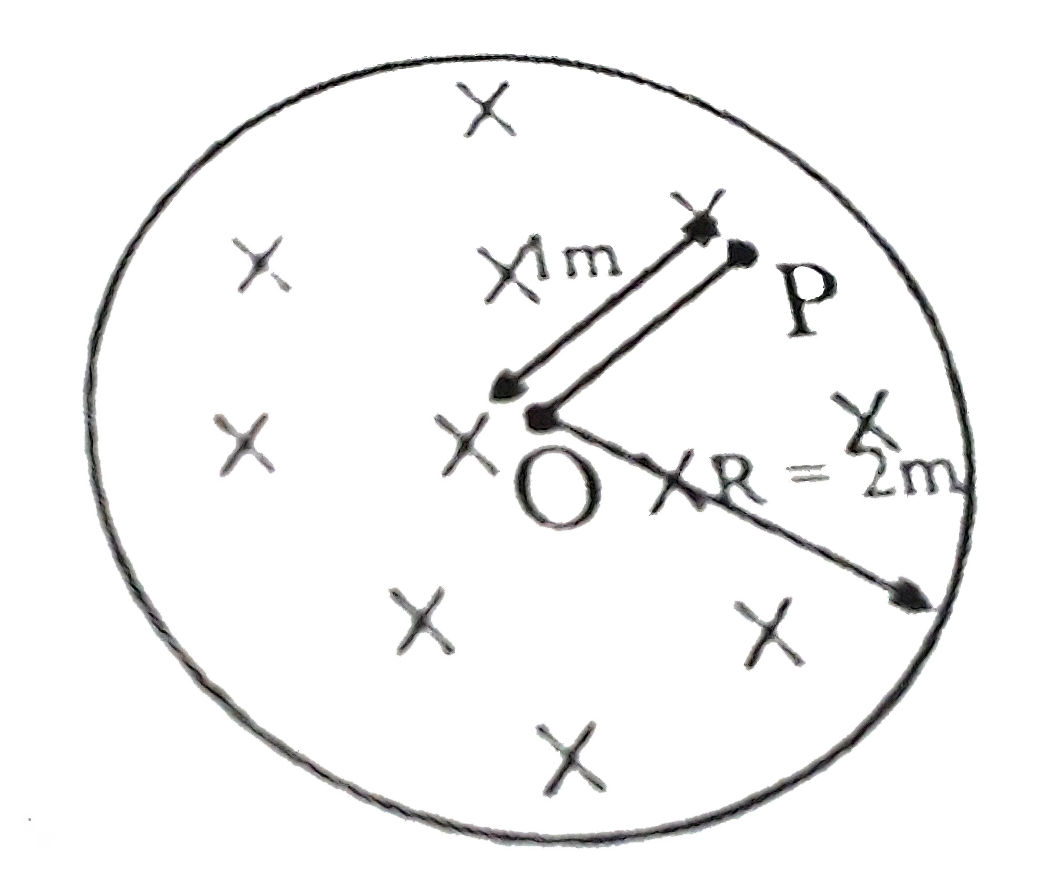 A8 volt/mB6 volt/mC4 volt/mDnone
A8 volt/mB6 volt/mC4 volt/mDnone
Induced emf and current due to a changing uniform B field
Figure 30-8 shows a conducting loop consisting of a half-circle of radius r = 0.20 m and three straight sections. The halfcircle lies in a uniform magnetic field →B that is directed out of the page, the field magnitude is given by B=4.0t2+2.0t+3.0, with B in teslas and tin seconds. An ideal battery with emf Ebat = 2.0 V is connected to the loop. The resistance of the loop is 2.0 Ω.
(a) What are the magnitude and direction of the emf Eind induced around the loop by field →B at t = 10 s?
(b) What is the current in the loop at t = 10 s?
View SolutionThe position of a particle is given by
r=3tˆi+2t2ˆj+8ˆk
where, t is in seconds and the coefficients have the proper units for r to be in meters.
(i) Find v (t) and a(t) of the particles.
(ii) Find the magnitude and direction of v(t) and a(t) at t=1s.
View SolutionThe flux of magnetic field through a closed conducting loop of resistance 0.4Ω changes with time according to the equation Φ=0.20t2+0.40t+0.60 where t is time in seconds.Find (i)the induced emf at t=2s.(ii)the average induced emf in t=0 to t=5s.(iii)charge passed through the loop in t=0 to t=5s (iv)average current.In time interval t=0 to t=5s (v) heat produced in t=0 to t=5s
View SolutionIn a cylinder region of radius R, a uniform magnetic field is there which is increasing with time, according as B=B0t2. A positive point charge q is released from rest at P(OP=R2) at t=0 [the instant the field is switched on]
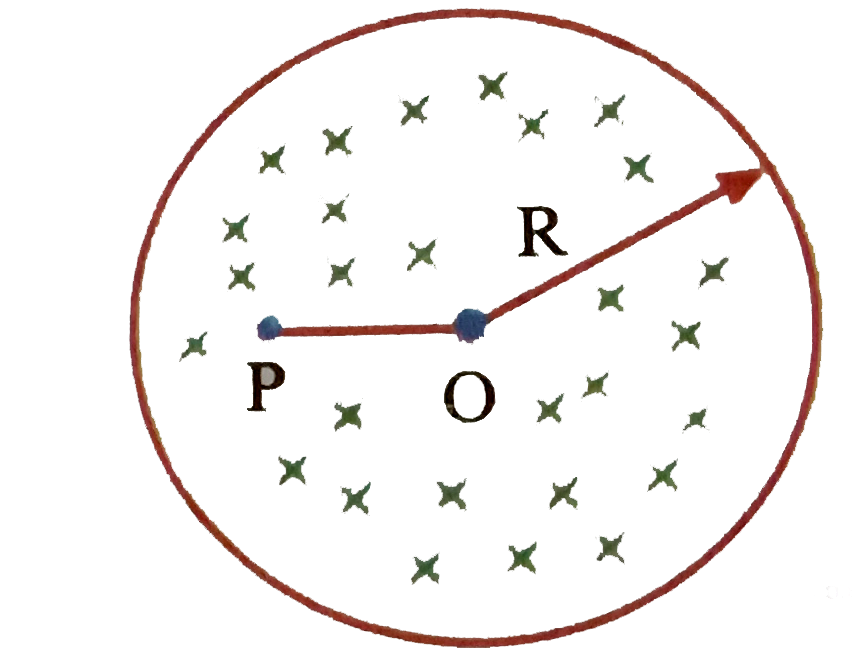
The force experienced by, the point charge at t=1s, is (R=2m)
View SolutionA magnetic field B=2t+4t2 (where t = time) is applied perpendicular to the plane of a circular wire of radius and resistance R. If all the units are in SI the electric charge that flows through the circular wire during t = 0 s to t = 2 s is
View Solution
